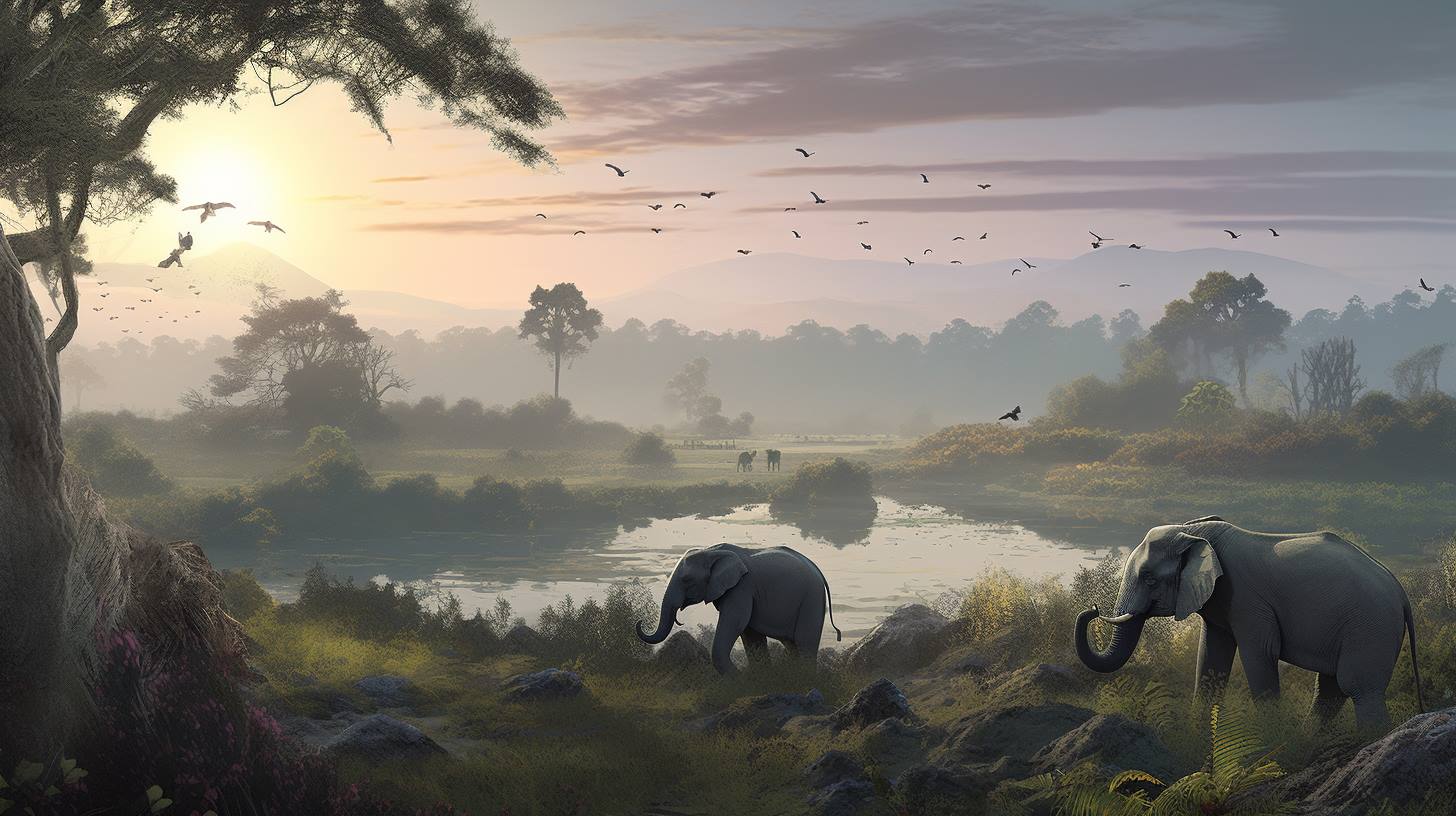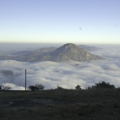Kaziranga National Park, nestled in the heart of Assam’s breathtaking landscape, stands as a testament to India’s commitment to wildlife conservation. In this wildlife haven, the harmonious coexistence of diverse fauna and flora paints a picturesque scene, drawing nature enthusiasts and wildlife advocates alike.
A Wildlife Sanctuary Beyond Compare
Kaziranga National Park, established in 1905, has become a symbol of success in wildlife conservation. Spread over 1087 square kilometers, this UNESCO World Heritage Site boasts a rich tapestry of ecosystems, supporting an unparalleled variety of wildlife.
The Conservation Call
At its core, Kaziranga serves as a lifeline for endangered species, with a primary focus on the preservation of the iconic one-horned rhinoceros. Its success story in rhino conservation has echoed globally, making it a critical player in global wildlife conservation efforts.
Geographic Location
Assam’s Breathtaking Landscape
Situated in the northeastern state of Assam, Kaziranga’s landscape is a breathtaking blend of lush greenery, meandering rivers, and expansive grasslands. This unique topography creates a haven for an array of wildlife species.
Unique Features of Kaziranga’s Terrain
The park’s diverse terrain includes tall elephant grass, rugged reed beds, and shallow pools, providing a diverse range of habitats for its inhabitants. This mosaic landscape ensures a haven for both grazers and predators.
Fauna Diversity
Iconic One-Horned Rhinoceros
Kaziranga is synonymous with the one-horned rhinoceros, and the park’s success in their conservation has seen their population thrive. Visitors have the rare opportunity to witness these majestic creatures in their natural habitat.
Bengal Tigers and Their Significance
Apart from rhinos, Kaziranga is also home to the majestic Bengal tiger. The presence of these big cats plays a crucial role in maintaining the ecological balance of the park.
Other Rare and Endangered Species
Beyond the charismatic rhinos and tigers, Kaziranga shelters various other rare and endangered species, including wild water buffaloes, elephants, and swamp deer.
Flora in Kaziranga
Diverse Vegetation and Ecosystems
Kaziranga’s diverse flora includes alluvial grasslands, riverine forests, and tropical moist broadleaf forests, creating a mosaic of ecosystems that supports its rich biodiversity.
Unique Plant Species
The park is home to several unique plant species, including orchids, ferns, and aquatic plants. The botanical diversity complements the vibrant wildlife, creating a balanced ecosystem.
Conservation Efforts
Success Stories in Protecting Endangered Species
Kaziranga’s success stories extend beyond rhino conservation, with significant achievements in protecting other endangered species. The park’s commitment to conservation is evident in the increasing numbers of various wildlife populations.
Ongoing Initiatives for Preservation
The park continues to implement innovative strategies for wildlife preservation, including community involvement, anti-poaching measures, and habitat restoration projects.
Visitor Experience
Safari Options and Experiences
For visitors seeking an immersive experience, Kaziranga offers various safari options, including elephant safaris and jeep safaris. These excursions provide a close encounter with the park’s magnificent residents.
Responsible Tourism Practices
Kaziranga emphasizes responsible tourism, promoting ethical wildlife viewing and environmental sustainability. Visitors are encouraged to adhere to guidelines that prioritize the well-being of the park and its inhabitants.
Challenges Faced
Human-Wildlife Conflict
The success of Kaziranga comes with its set of challenges, including instances of human-wildlife conflict. Balancing the needs of local communities with conservation efforts remains an ongoing struggle.
Environmental Challenges
Factors like climate change and habitat degradation pose threats to Kaziranga’s delicate ecosystem. Conservationists are actively addressing these challenges to ensure the park’s long-term sustainability.
Role in Eco-Tourism
Sustainable Tourism Practices
Kaziranga plays a pivotal role in promoting eco-tourism, with a focus on minimizing the ecological footprint of visitors. Sustainable practices aim to preserve the park’s pristine environment for future generations.
Benefits for Local Communities
Eco-tourism initiatives contribute to the economic well-being of local communities, fostering a sense of responsibility and partnership in the conservation efforts.
Bird Watching Paradise
Rich Avian Diversity
Beyond its famed mammals, Kaziranga is a paradise for bird watchers. The park is home to an extensive variety of bird species, making it a must-visit destination for ornithologists and bird enthusiasts.
Bird Watching Opportunities
Visitors can indulge in bird watching excursions, spotting rare and migratory birds against the backdrop of Kaziranga’s scenic landscapes.
Accommodations and Infrastructure
Lodging Options for Visitors
Kaziranga offers a range of lodging options, from luxurious resorts to eco-friendly campsites, catering to the diverse preferences of visitors. Accommodations are designed to blend with the natural surroundings.
Accessibility and Facilities
The park ensures accessibility for all visitors, with well-maintained roads and facilities. Adequate amenities are in place to enhance the overall experience while ensuring minimal impact on the environment
Conclusion
Kaziranga National Park stands as a testament to the marvels of wildlife conservation, nestled in the heart of Assam’s breathtaking landscape. The park’s commitment to preserving biodiversity, exemplified by its success in rhinoceros conservation, has earned it global recognition.
As a haven for diverse flora and fauna, Kaziranga offers a unique experience for nature enthusiasts and wildlife advocates. The park’s landscape, with its lush greenery, meandering rivers, and expansive grasslands, creates a picturesque setting for the thriving wildlife within.
However, the journey towards conservation is not without its challenges. Instances of human-wildlife conflict and environmental threats underline the delicate balance required for the sustained well-being of Kaziranga.
The role of Kaziranga in eco-tourism is commendable, promoting responsible tourism practices that contribute to both the preservation of the park and the economic upliftment of local communities. Sustainable tourism ensures that future generations can also marvel at the wonders of Kaziranga.
Beyond its natural splendors, Kaziranga provides a glimpse into the rich cultural heritage of Assam. The park becomes not only a sanctuary for wildlife but also a hub for celebrating local traditions and festivities.
FAQs
Is Kaziranga National Park open to visitors year-round?
Yes, Kaziranga is open to visitors throughout the year, but certain areas may have seasonal restrictions.
What is the best time for wildlife sightings in Kaziranga?
The winter months, from November to February, are considered ideal for wildlife sightings as animals are more active.


